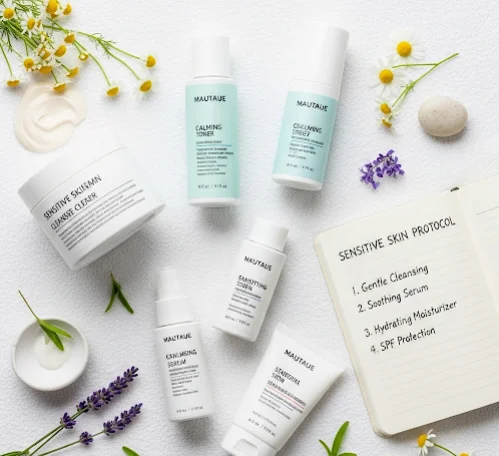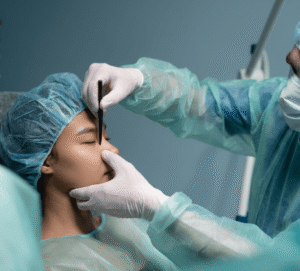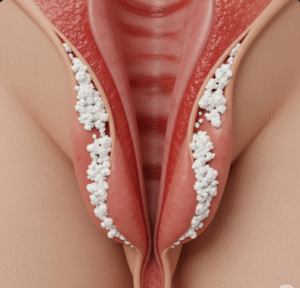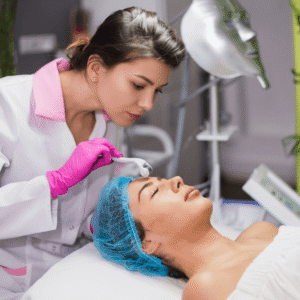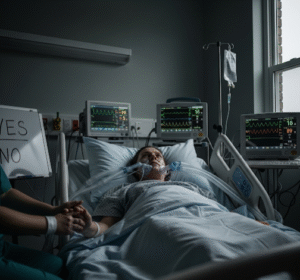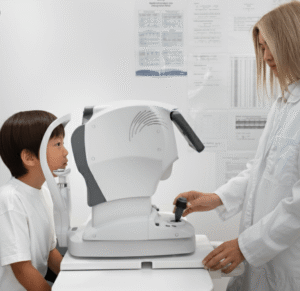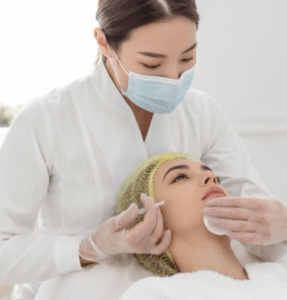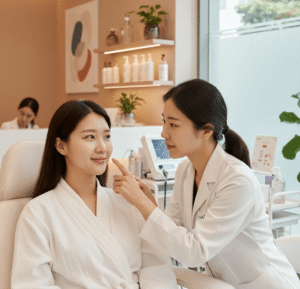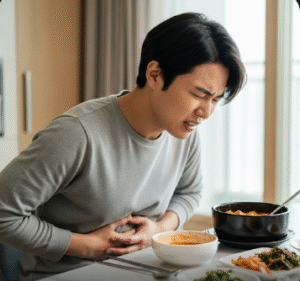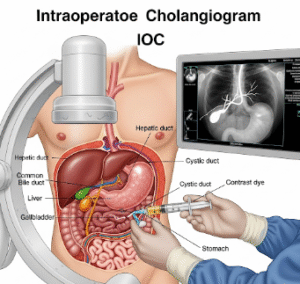What it is
A sensitive skin protocol is a dermatology-guided skincare and treatment plan designed for people whose skin reacts easily to irritants, products, or environmental stressors. Sensitive skin often shows redness, stinging, burning, or dryness when exposed to harsh cleansers, active ingredients (like retinoids or acids), or even temperature changes.
In Korea, sensitive skin is treated with a gentle, barrier-first philosophy: strengthening the skin barrier, calming inflammation, and avoiding triggers while gradually introducing beneficial treatments. Dermatology clinics and K-beauty brands have developed specialized products, facials, and clinical care systems for sensitive skin patients.
Why it’s done
- Reduce redness, irritation, and stinging
- Strengthen the skin barrier against allergens and pollutants
- Hydrate deeply to prevent flakiness and tightness
- Calm inflammation (important for rosacea, eczema, or post-laser care)
- Prevent premature aging caused by chronic irritation
- Prepare skin for tolerating dermatology treatments (lasers, peels, retinoids)
Alternatives
- Lifestyle adjustments → avoid hot showers, fragrance-heavy products, smoking, and excessive alcohol
- Oral supplements → antioxidants (vitamin C, astaxanthin), zinc, and omega-3 fatty acids
- Professional facials → gentle hydration facials with oxygen, LED, or sonophoresis infusion
- Minimalist routines → “skin fasting” (temporary minimal care) to let skin reset
Preparation
- Skin analysis with digital imaging to check barrier health and redness levels
- Trigger identification of products, environmental factors, or diet
- Routine simplification to remove harsh scrubs, acids, or multiple actives
- Patch testing for every new product on the jawline or behind the ear
How it’s Done
Step 1: Cleansing
- Low-pH, sulfate-free cleansers that don’t strip oils
- Cream or gel formats preferred
- Double cleansing only if wearing heavy makeup or sunscreen
Step 2: Hydration layer
- Toners or essences with hyaluronic acid, panthenol, or beta-glucan
- Avoid alcohol-based toners
Step 3: Calming ampoule/serum
- Centella asiatica (Cica), madecassoside, peptides, or allantoin
- Propolis or green tea extract for antioxidant calming
Step 4: Barrier repair moisturizer
- Creams with ceramides, cholesterol, fatty acids, and squalane
- Balm textures for very dry or post-laser skin
Step 5: Sun protection
- Daily SPF 50+, PA++++ broad-spectrum
- Mineral sunscreens (zinc/titanium) for sensitive skin
- SPF cushion compacts for easy reapplication
Optional evening care
- Sleeping mask with panthenol or centella extract
- Occlusive balm for dry patches
Clinic add-ons in Korea
- LED therapy for inflammation control
- Soothing facials with ceramide or panthenol ampoules
- Iontophoresis or sonophoresis with calming serums
Recovery
- 1–2 weeks → noticeable reduction in redness and irritation
- 4 weeks → barrier becomes stronger, skin less reactive
- 8+ weeks → skin tolerates more actives and dermatology treatments with minimal irritation
Dermatologists in Korea often recommend monthly calming facials or barrier support treatments to maintain results.
Complications Without Care
- Chronic irritation and redness
- Flare-ups of eczema, rosacea, or acne
- Post-inflammatory hyperpigmentation (PIH)
- Premature wrinkles and sagging due to inflammation
- Inability to tolerate advanced skincare or procedures
Treatment Options in Korea
Soothing ingredients commonly used
- Centella asiatica (Cica)
- Panthenol
- Ceramides
- Madecassoside
- Beta-glucan
- Heartleaf (Houttuynia cordata)
Popular Korean sensitive-skin brands
- Aestura Atobarrier
- Dr. Jart+ Cicapair
- Illiyoon Ato
- Etude House Soon Jung
- Round Lab Dokdo
Signature Korean protocols
- Post-laser → mineral SPF + ceramide cream + panthenol ampoule
- Rosacea-prone → centella-rich serum + LED light therapy
- Acne-sensitive → lightweight barrier cream + propolis serum + zinc infusion
- Aging-sensitive → peptide ampoule + ceramide cream + sleeping mask
Preventive trend
Even people without obvious sensitivity use barrier-friendly routines in Korea to reduce the risk of developing skin reactivity in the future.
Medical tourism
International patients often receive sensitive-skin recovery kits after dermatology treatments in Seoul clinics to ensure safe healing once they return home.
Key Point
A sensitive skin protocol in Korea emphasizes barrier repair, hydration, and calming actives, combined with dermatology-grade products and supportive clinic treatments. With consistent use, patients achieve calmer, stronger, and more tolerant skin, making them better candidates for advanced K-beauty therapies.

